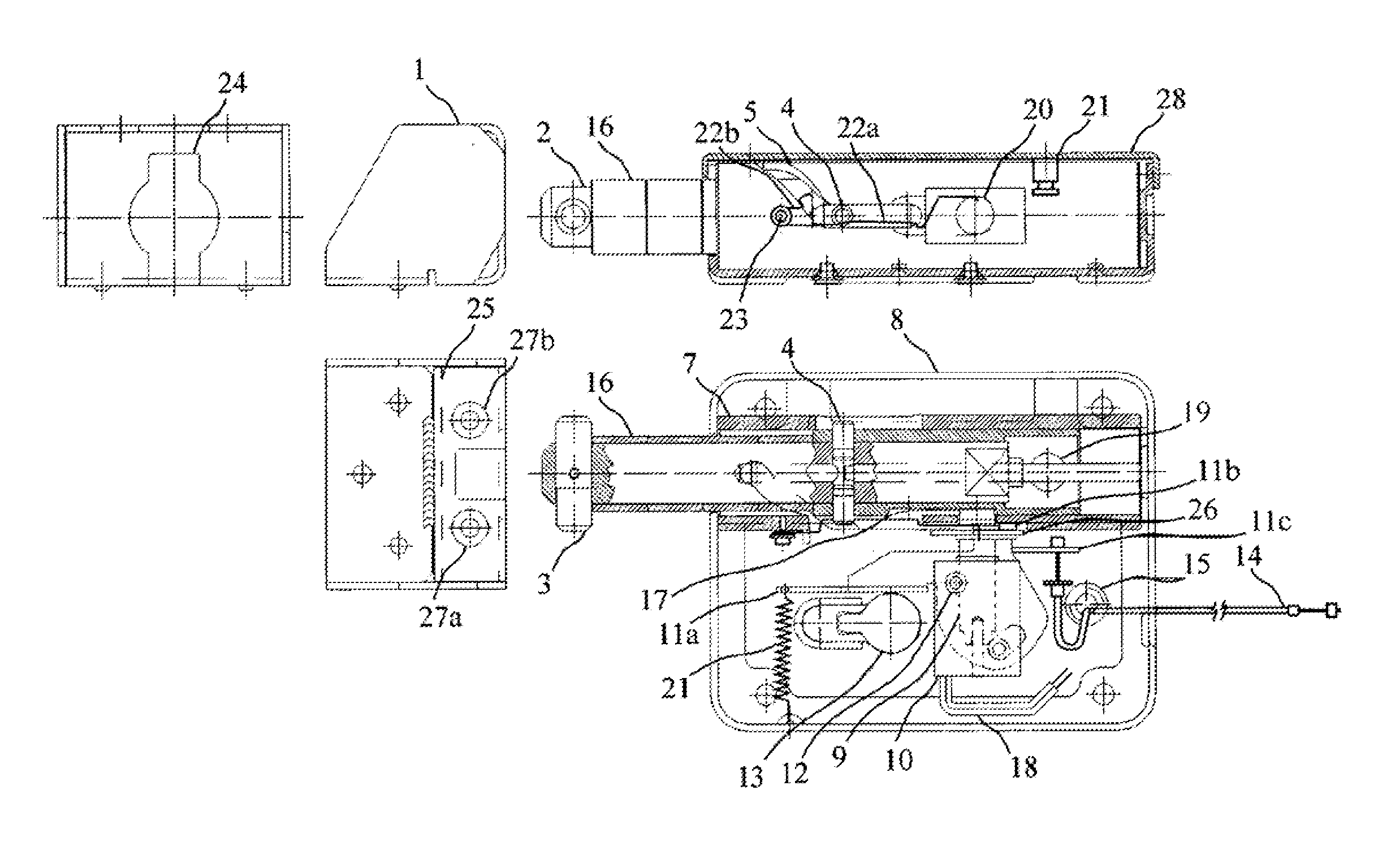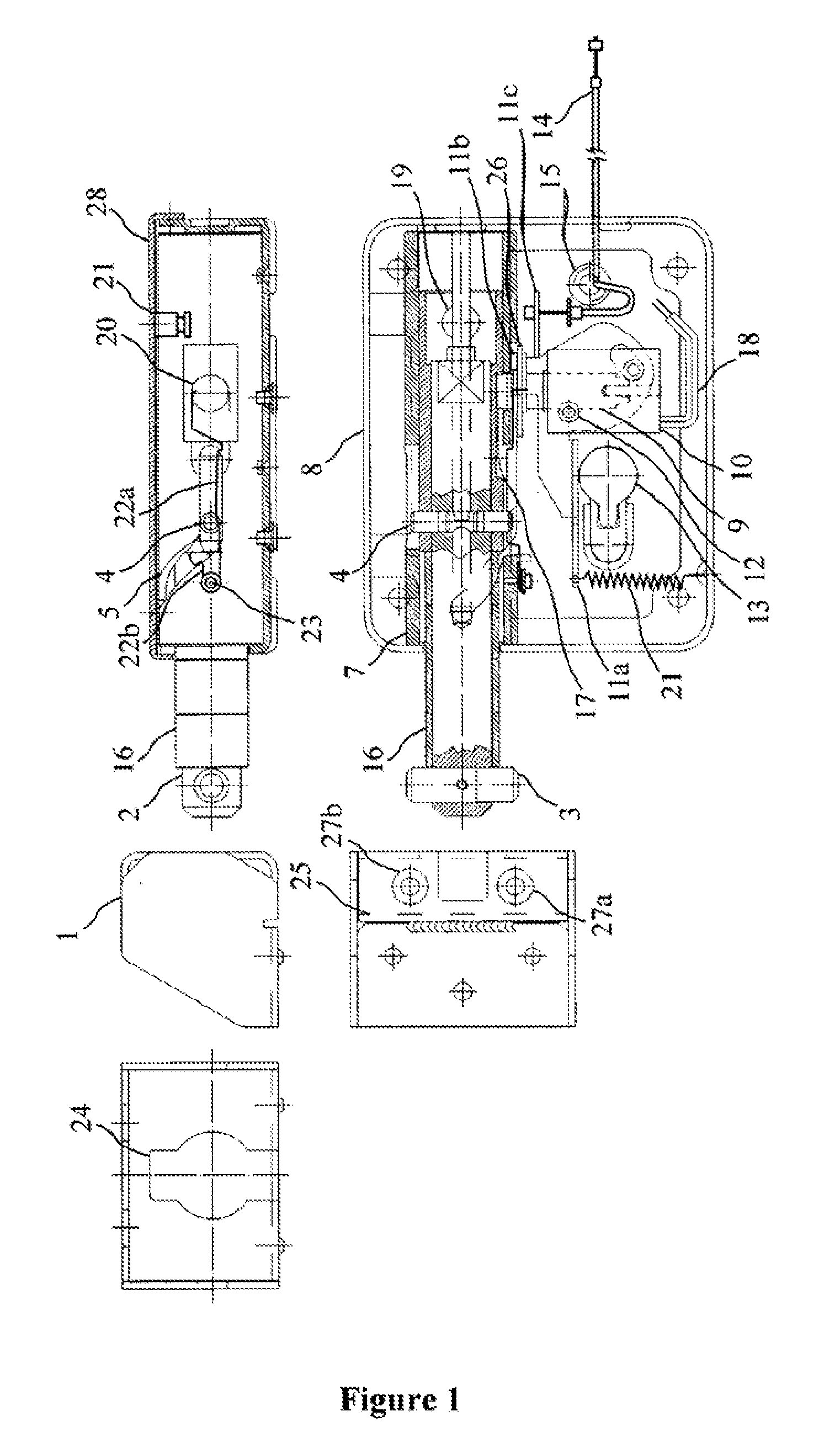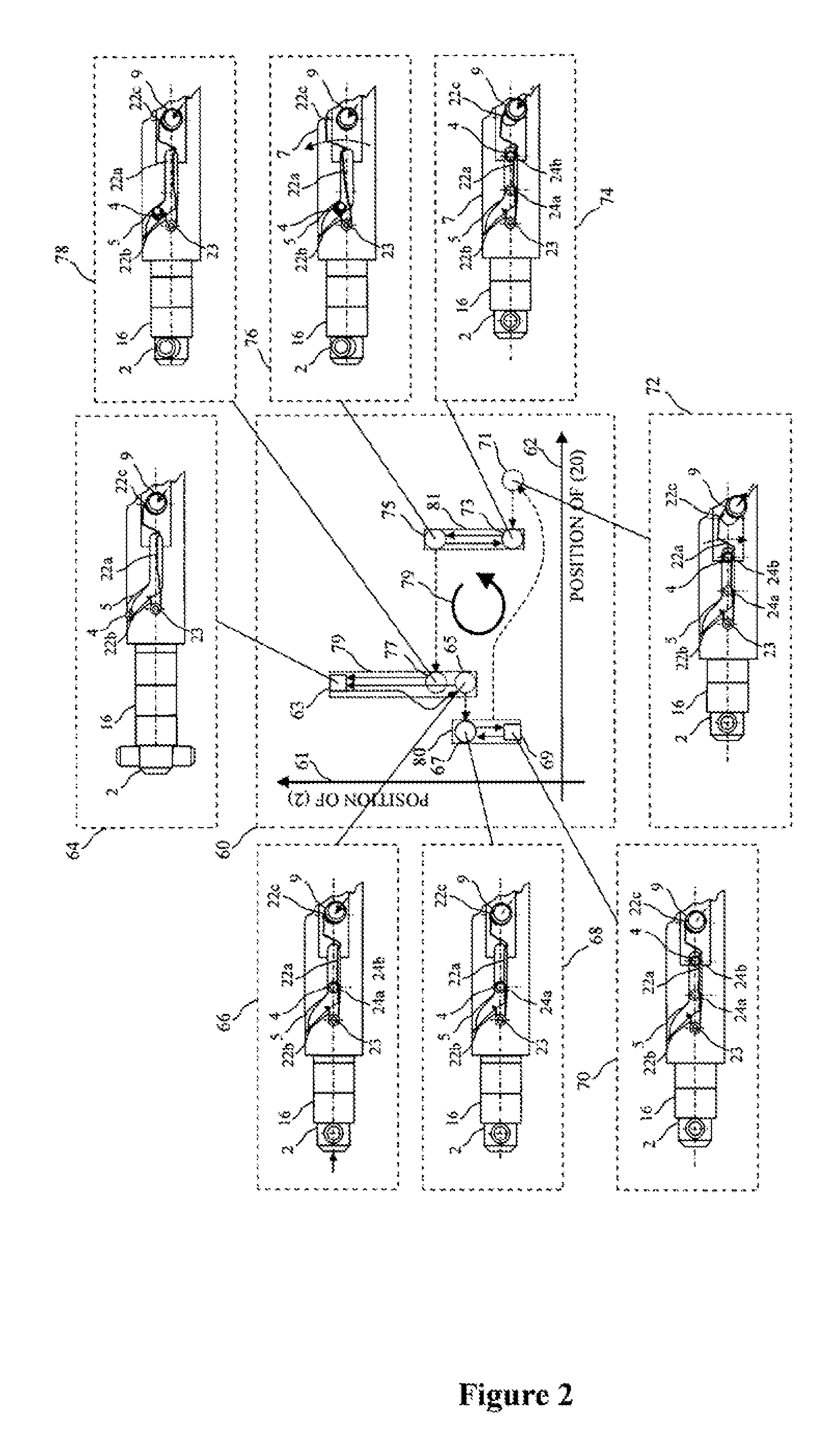Electrically controlled lock for automated sliding type gates and control method for the same
a technology of automatic sliding gate and electric control, which is applied in the direction of mechanical control, non-mechanical control, fastening means, etc., can solve the problems of not being used on automatically-operated sliding gates, abovementioned devices are not electrically controlled, and easy to jam
- Summary
- Abstract
- Description
- Claims
- Application Information
AI Technical Summary
Benefits of technology
Problems solved by technology
Method used
Image
Examples
Embodiment Construction
[0025]Selected combinations of aspects of the disclosed technology correspond to a plurality of different embodiments of the present invention. It should be noted that each of the exemplary embodiments presented and discussed herein should not insinuate limitations of the present subject matter. Features or steps described as part of one embodiment may be used in combination with aspects of another embodiment to yield yet further embodiments. Additionally, certain features may be interchanged with similar devices of features not expressly mentioned which perform the same or similar function.
[0026]In Figure is presented a preferred embodiment of the device object of the present invention.
[0027]The device comprises one piston (2) that is protruding in the gap between the sliding gate and its frame, and is characterized by at least one laterally protruding tooth (3) close to its free edge the will be named head of the harpoon in the description that follows.
[0028]When the gate is closi...
PUM
 Login to View More
Login to View More Abstract
Description
Claims
Application Information
 Login to View More
Login to View More - R&D
- Intellectual Property
- Life Sciences
- Materials
- Tech Scout
- Unparalleled Data Quality
- Higher Quality Content
- 60% Fewer Hallucinations
Browse by: Latest US Patents, China's latest patents, Technical Efficacy Thesaurus, Application Domain, Technology Topic, Popular Technical Reports.
© 2025 PatSnap. All rights reserved.Legal|Privacy policy|Modern Slavery Act Transparency Statement|Sitemap|About US| Contact US: help@patsnap.com



